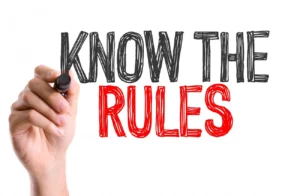Part of an ongoing series of 5e Rules notes.
So Invisibility is one of those “DM Bane” spells. But (spoilers!) in D&D 5e, it’s … useful, but not game-breaking.
The Invisibility Spell:
A creature you touch becomes invisible until the spell ends [Concentration, up to 1 hour]. Anything the target is wearing or carrying is Invisible as long as it is on the target’s person. The spell ends for a target that attacks or casts a spell.
Well, that sounds ominous. Uber-rogues! Hidden assassins! Parties just waltzing through dungeons!
Hmmmm … but what does that really mean?
An Invisible creature is:
- Impossible to see without the aid of magic or a special sense (see below for more detail).
- Heavily Obscured (so that you are effectively “Blinded” while dealing with such a target).
- Still detectable by any noise it makes or any tracks it leaves or any scent it gives off. A fairly common ruling, though not backed by RAW, is that this (under certain circumstances) represents a Disadvantage on Perception checks. Note that being detected doesn’t necessarily change the Disadvantage to attack such a target; in general, it mainly offers the opportunity to attack it.
- “I have no visual or auditory or olfactory sign that there is anything near me. So I will not start swinging my sword.”
- “I heard a footstep, I saw a splash in a puddle, I smelled a familiar perfume — I swing, but I know I am at a Disadvantage.”
- On the other hand, “I saw footsteps running through the puddle!” while not making you an easy target, does make your presence known and, potentially, dealable with.
- It is sometimes observed that being Invisible is different from being (successfully) Hidden. Taking the Hide action entails the other senses that make one perceivable.
Looking at PHB 194:
When you attack a target that you can’t see, you have Disadvantage on the attack roll. This is true whether you’re guessing the target’s location or you’re targeting a creature you can hear but not see. If the target isn’t in the location you targeted, you automatically miss, but the DM typically just says that the attack missed, not whether you guessed the target’s location correctly. When a creature can’t see you, you have Advantage on attack rolls against it.
What does that mean, basically?
- Attack Rolls against an invisible creature have Disadvantage
- Attack Rolls by an invisible creature have Advantage.
Which is pretty awesome, but is not game-dominating.
Delving deeper, the Invisibility spell:
- Requires Concentration. That makes it pretty good for “I will make you invisible, go scout ahead.” Less so for “Here, let me make you invisible mid-battle, as long as I OH MY GOD THE FIREBALL!”
- Unless you are an Invisible Stalker, where Invisibility an innate condition that doesn’t require Concentration.
- Ends when an Invisible creature attacks or casts a spell.
- Prepping for an attack doesn’t drop the Invisibility (we’re not talking Romulan warbirds here); making the attack roll signifies the attack, dropping the Invis (even if it misses).
- But executing a spell that creates a saving throw result still counts as dropping the Invis, even though there is no attack roll.
- Readying an Attack doesn’t drop the Invis, but Readying a spell does.
- For a Rogue, that attack that drops the spell is probably a Sneak Attack, since that gives them Advantage.
- For a multi-turn spell-casting, starting the spell breaks the Invisibility.
- Prepping for an attack doesn’t drop the Invisibility (we’re not talking Romulan warbirds here); making the attack roll signifies the attack, dropping the Invis (even if it misses).
So what might counter Invisibility (beyond footprints and being noisy)?
- Blindsight: “A creature with blindsight can perceive its surroundings without relying on sight.” These are mostly underdark creatures.
- Tremorsense: “A monster with tremorsense can detect and pinpoint the origin of vibrations within a specific radius, provided that the monster and the source of the vibrations are in contact with the same ground or substance “
- Truesight: A creature with truesight can, out to a specific range, see in normal and magical darkness, and see Invisible creatures and objects.
In general, the above are either (a) creatures living belowground or in the dark, or (b) beings of a higher order.
- Dispel Magic will work against an Invisibility spell just fine … but you need to be able to target it, meaning (most likely) a Perception roll first, with the caveats above.
- Create Water is also a good way to be able to perceive an invisible creature, either through raindrops or through puddles.
And, just as a general note, Area of Effect spells are an excellent tactical counter to Invisibility (think “Depth charges vs suspected enemy submarine”).



One thought on “D&D 5e Rules – Invisibility!”